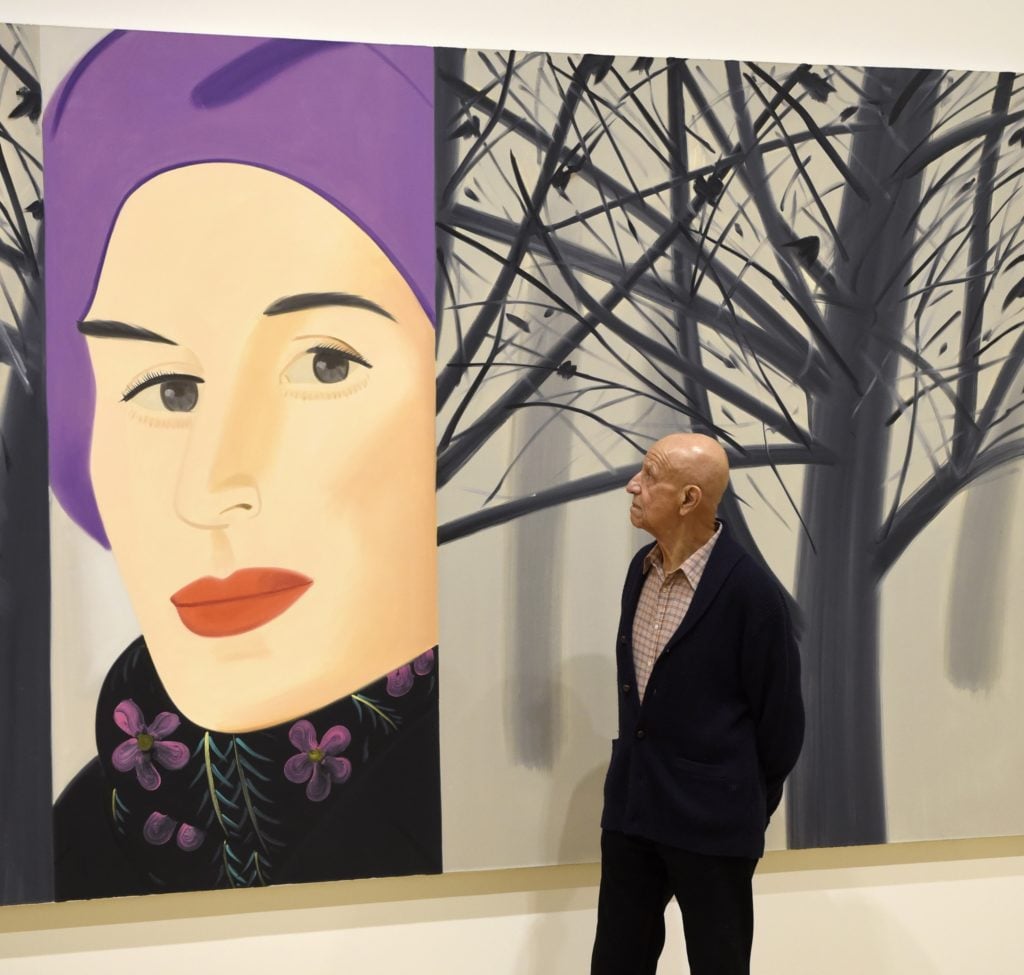People
Alex Katz on Why You Should Kneel in Front of El Greco (Literally) and 5 Other Provocative Thoughts About Art
Katz takes art lovers on a stroll through art history with his new book.

Katz takes art lovers on a stroll through art history with his new book.

Eileen Kinsella

Most of us won’t have the opportunity to wander through a museum with one of the world’s most popular living painters. But a new book offers the next best thing.
Artist Alex Katz, the 91-year-old painter known for his trademark flat, cool, spare portraits, offers his take on everything from Abstract Expressionism to the Dutch Golden Age in the new book, Looking at Art With Alex Katz. After decades of gallery and museum shows, Katz is more in demand now than ever, despite the suggestions of skeptics who have asked him if he’s “washed up” or “over the hill,” in recent years he says.
“It’s very accessible,” Katz told artnet News of the book, which comes out October 30. “It’s for a broad audience. It’s sophisticated enough that bright people will have to read a lot of sentences twice. I think anyone can read it and get something out of it.”
It’s remarkable that Katz found the time to write a book considering his packed schedule. In the past year alone, he has been the subject of a number of solo shows, including “Alex Katz, Models & Dancers” at the LOTTE Museum of Art in Seoul and “Alex Katz: Brand New & Terrific” at the Neuberger Museum of Art at Purchase College in Purchase, New York.
In the 200-page volume, Katz offers his take on 90 artists (in alphabetical order), from Peter Doig to Leonardo da Vinci to Willem de Kooning. His concise entries, which typically are limited to one page and sometimes just one paragraph, touch on the artists’ place in art history, their unique style, and Katz’s own take on what makes their work memorable or lacking.
Katz says his selection of the artists “was instinctual,” but the entire process was refined over some 20 years. His earlier books included smaller-scale versions of this project, such as one that appeared at the end of his informal 2012 autobiography Inventing Symbols.
And what does he hope readers take away? “I hope people will read it and they’ll look at paintings differently and pay more attention to what they’re looking at,” Katz says.
To whet your appetite, we’ve pulled together six striking examples of Katz’s noteworthy takes.
“When I first saw Leonardo da Vinci’s Mona Lisa, I was disappointed in it,” Katz recalls. “The actual, physical painting didn’t seem to be particularly interesting… At first, it’s the smile they talk about, but you realize that the smile is frozen. It’s the eyes that are alive. Finally, it seemed as if it was Leonardo looking through a mask at you. It was a crazy experience and if I could have that experience, I’m sure other people have too.”
“El Greco paintings should be seen from below. His studio was small. If you get on your knees and imagine a dark room with flickering candles, they make more sense. He followed his instinct and it led him to visions.”
“His figure work suffers from a lack of substance. He frequently loses the body with vague shoulders. Look at Goya, who always gave his bodies substance with their shoulders.”
“If I had to choose one artist, [ancient Egyptian artist] Thutmose would be the one. I have chased his pieces all over Europe and the States. There is a small limestone fragment in the Brooklyn Museum of a mother kissing her daughter. The modeling is as firm and delicate as that of Raphael. It is very human.”
“I enjoy her attack on social bigots. I enjoy her social freedom to be able to say what no one else would or could. I enjoyed seeing more assholes in her show at the Museum of Modern Art (2008-9) than had ever been seen there before.”
“Eva Hesse seemed to me to be the most original sculptor of her time. Her ideas of materials and spaces with interior content are unparalleled. She was an artist who made art that fully engaged her as a person, and who left sculpture that is marvelously exciting and difficult to grasp fully.”
Looking at Art With Alex Katz is published by Laurence King and will be available on October 30 for $19.99.